#118 in Vietnam
Bánh Phu Thê: Basic Information
Pronunciation
Alternative Name(s)
Dish Type
Course
Mealtime
Popular Variations
Bánh Phu Thê: Ingredients and Preparation
Main Ingredients
Main Cooking Method
Preparation Process
Bánh Phu Thê: A Deep Dive
Cultural Significance
Taste
Texture
Aroma
Color
Serving Style
Serving Temperature
Accompaniment
Occasions
Seasons
Special Diets
Calories
Popularity
Popular Similar Dishes
- Bánh Ít
- Mont Phet Htok
- Khanom Chan
- Songpyeon
- Ang Ku Kueh
Popular Dining Area
Bánh phu thê, literally “husband and wife cake,” is a traditional Vietnamese steamed cake originating in Northern Vietnam. It was created in Bac Ninh Province during the Ly dynasty (1009-1225).
Bánh phu thê is a common offering for wedding ceremonies in Vietnam, symbolizing love and commitment. The pastry is given to the bride by the bridegroom on their wedding day and later enjoyed as a dessert at the wedding banquet.
Bánh phu thê consists of two parts: the chewy dough made from tapioca flour or glutinous rice flour and the sweet filling based on sweetened mung bean paste and shredded coconut.
The dough can be mixed with more ingredients to produce bánh phu thê with different colors, such as pandan extract (green) or gấc juice (red).
Locals usually place bánh phu thê in square containers made from coconut fronds before steaming it.
Read on to discover other informative facts about this festive Vietnamese steamed cake, including its strengths, weaknesses, frequently asked questions, and similar dishes.
Key Points
Bánh Phu Thê Images
Pros and Cons of Eating Bánh Phu Thê
Bánh phu thê comes with the following strengths and weaknesses.
Pros
Cons
After presenting you with the advantages and disadvantages of bánh phu thê, I will address a few frequently asked questions about this culturally significant pastry.



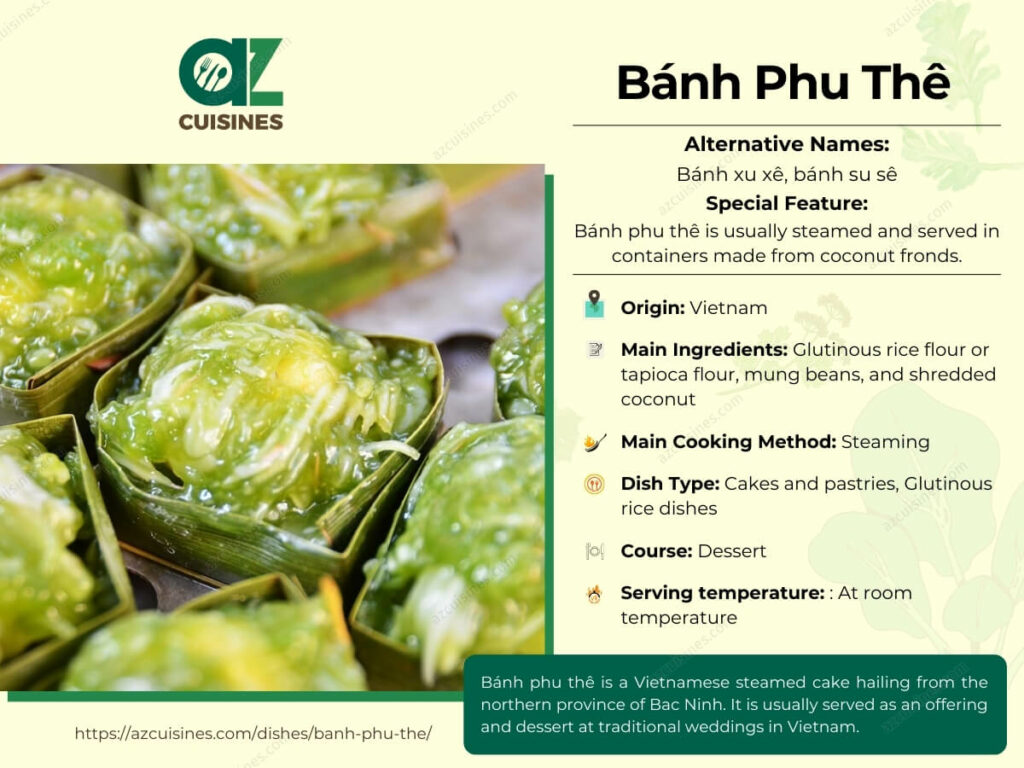
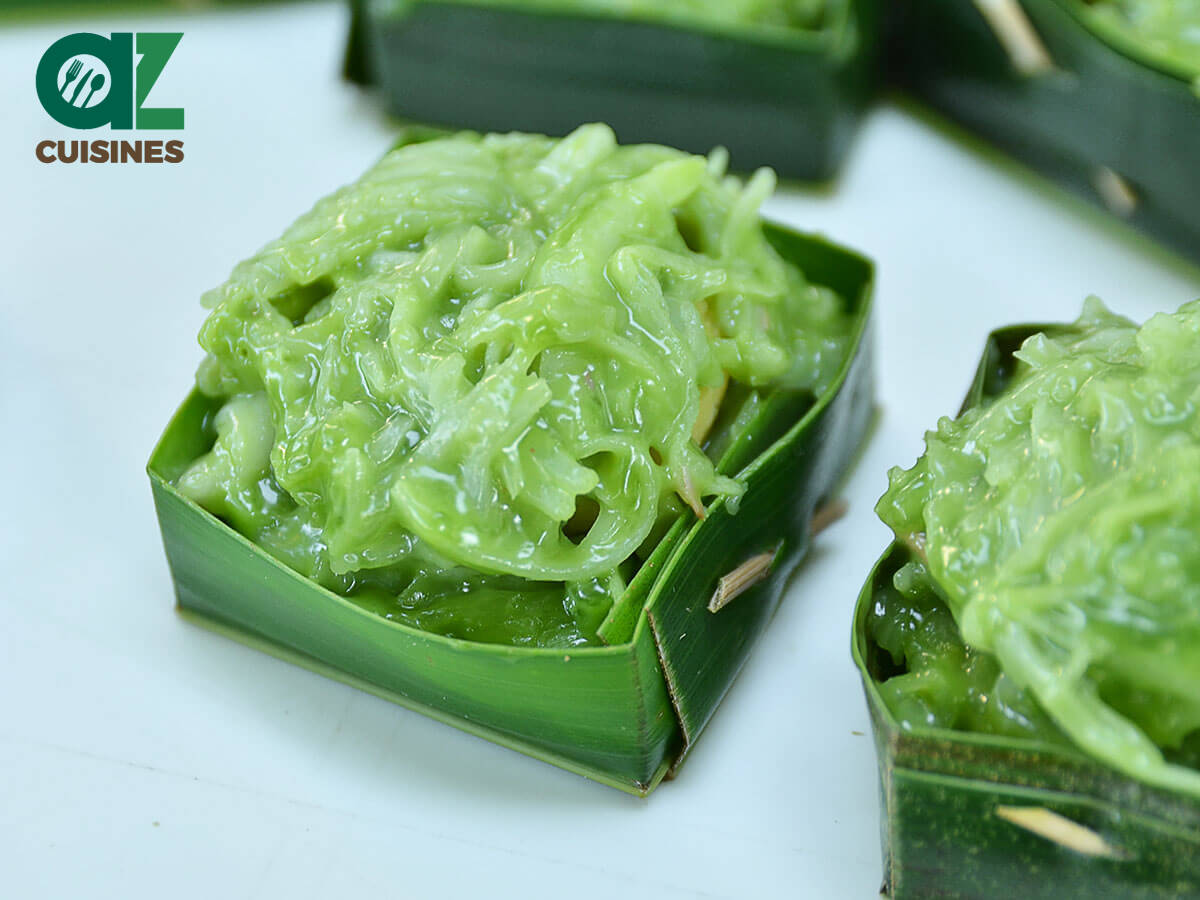
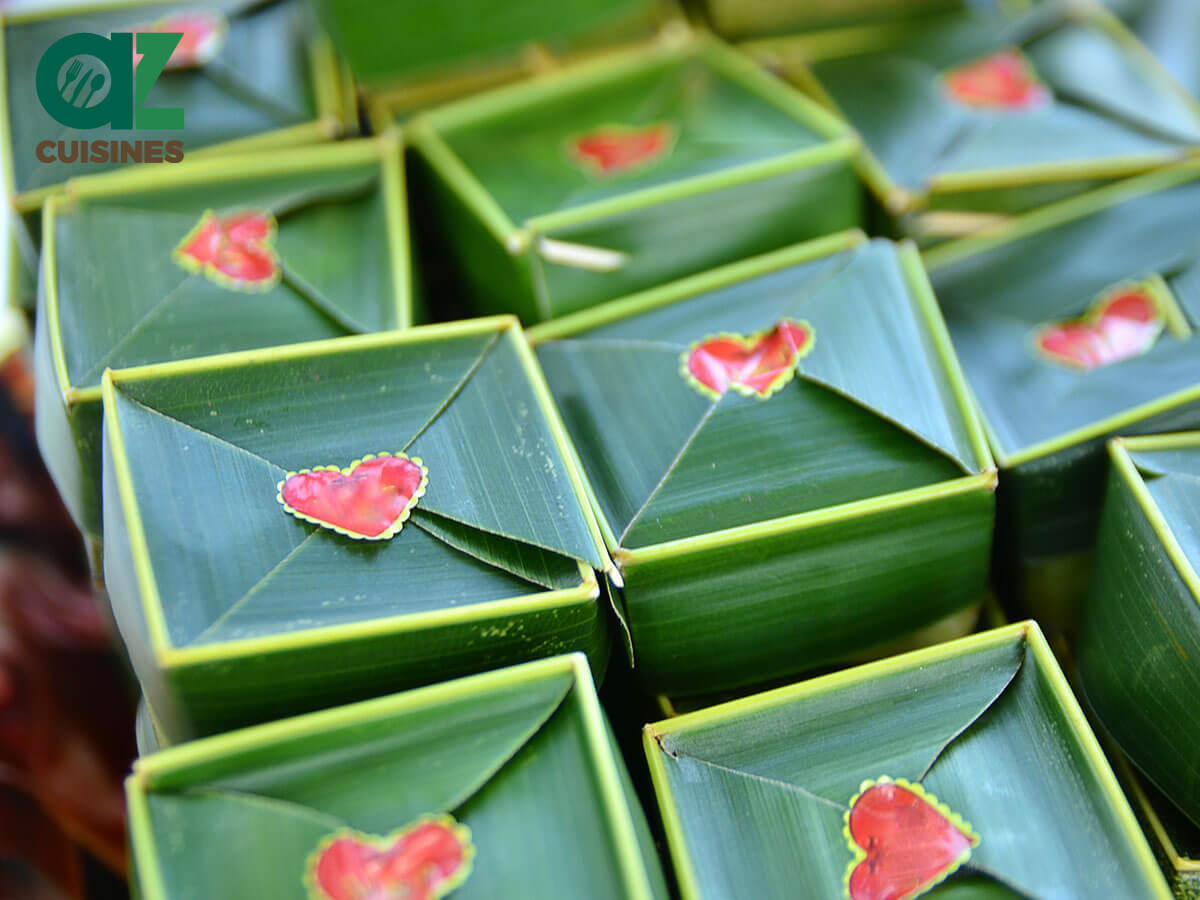
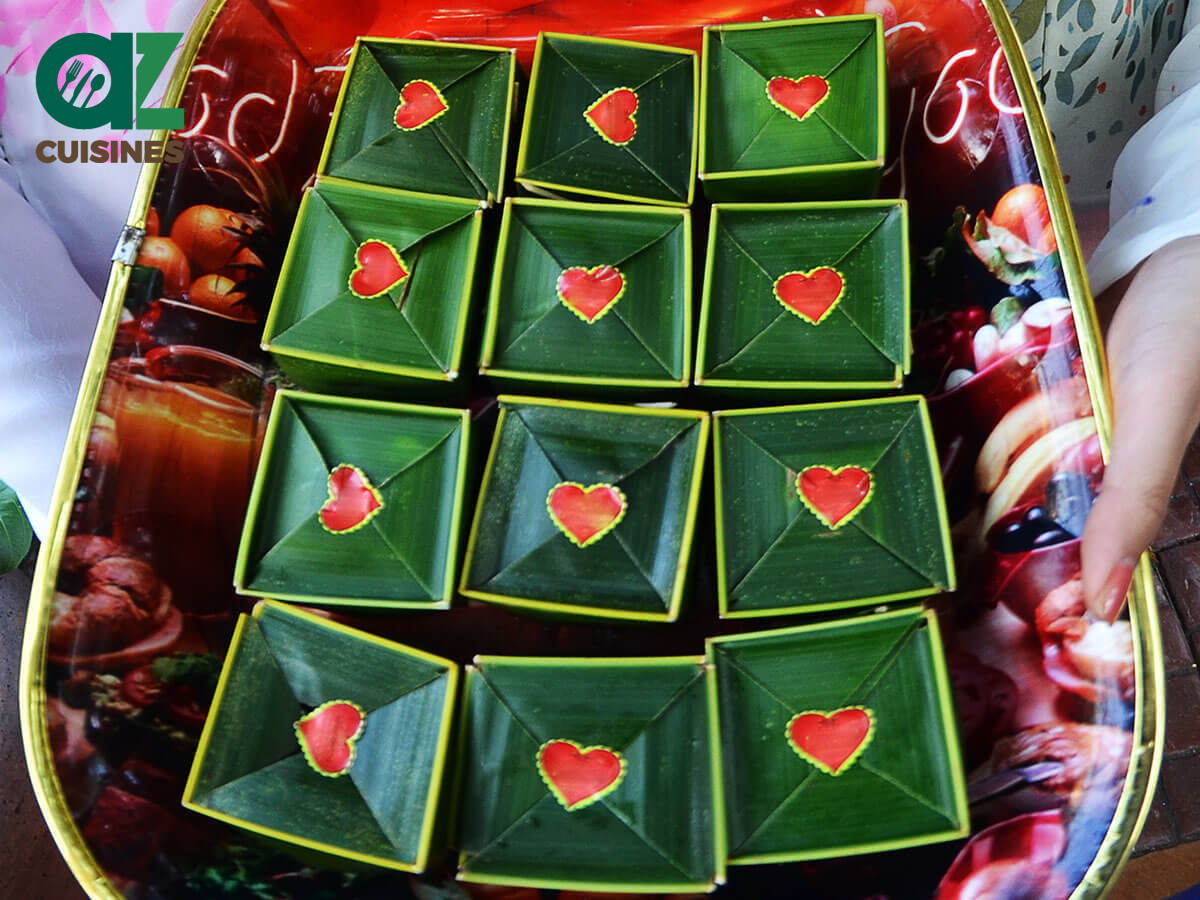
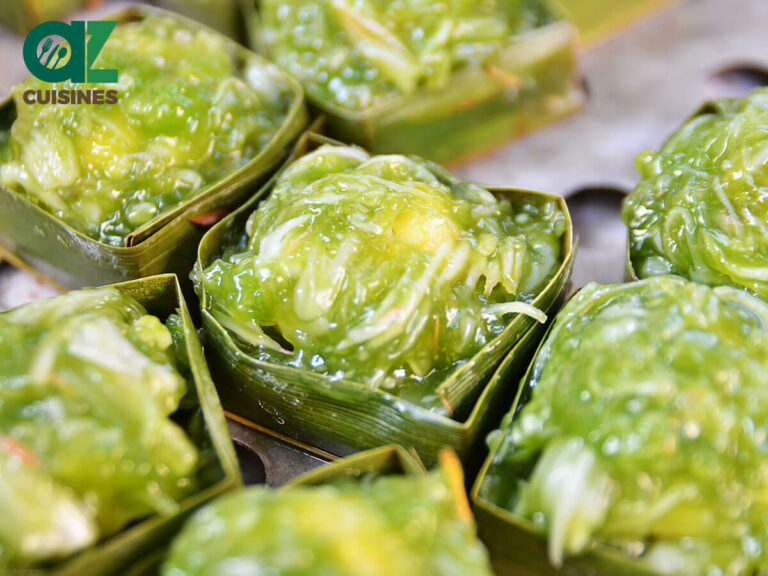
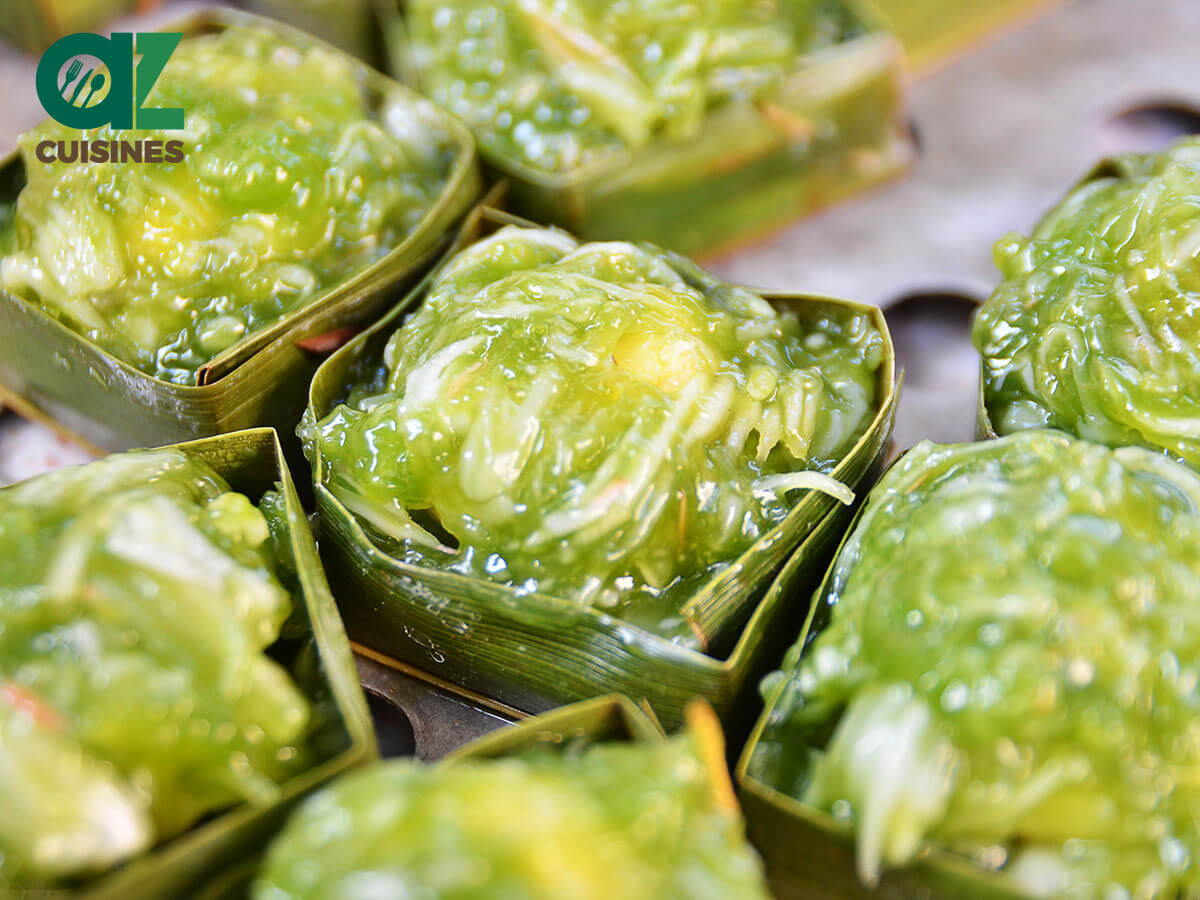
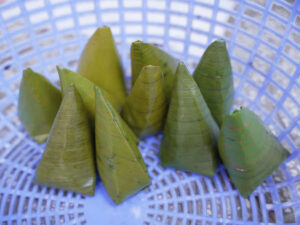
Truc Tran (Kris)
Senior Food Editor
Expertise
Home Cooking, Meal Planning, Recipe Development, Baking and Pastry, Food Editor, Cooking-video Maker, Vietnamese Food Evaluation Expert
Education
Truc Tran (Kris), an experienced food writer and editor, is great at exploring and describing global cuisines, from simple street food to fancy dining. In her writing, she skillfully mixes different flavors, cooking methods, and culinary traditions, showing the unique character of various cultures through their food and drinks. On azcuisines.com, Kris highlights her knowledge, especially in Asian cuisine and worldwide traditional dishes.